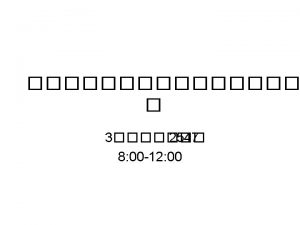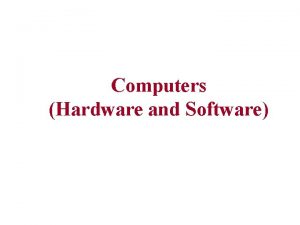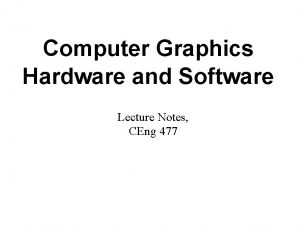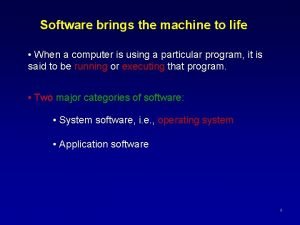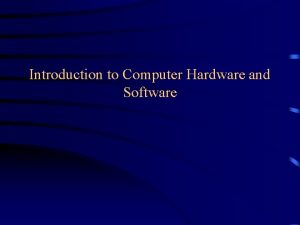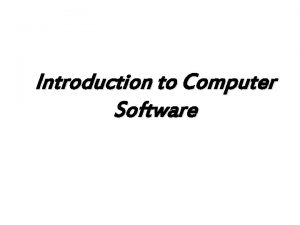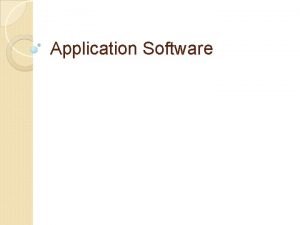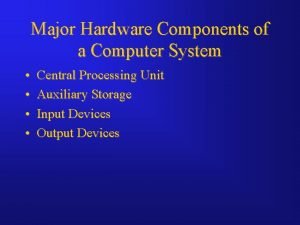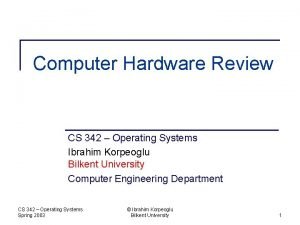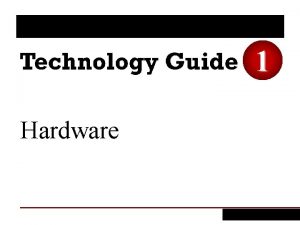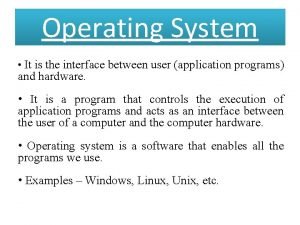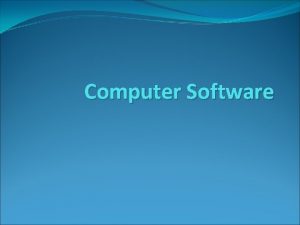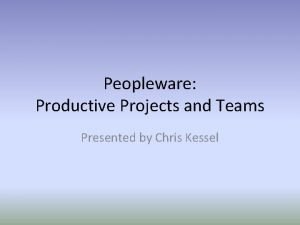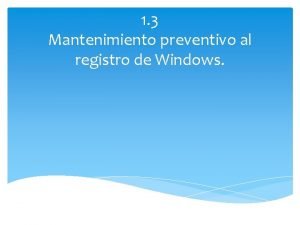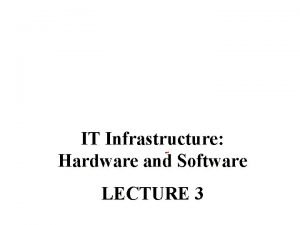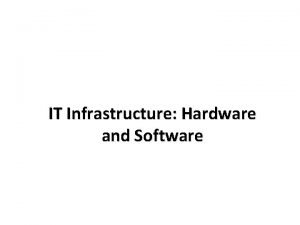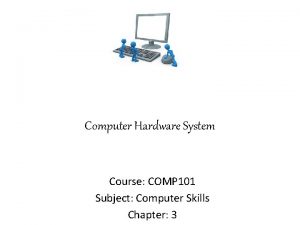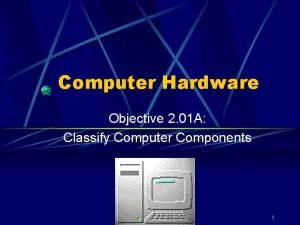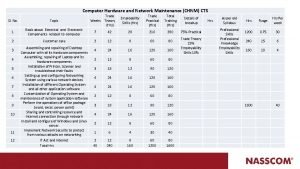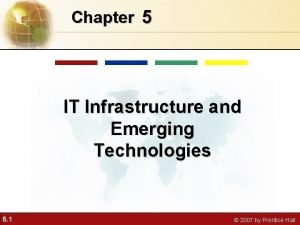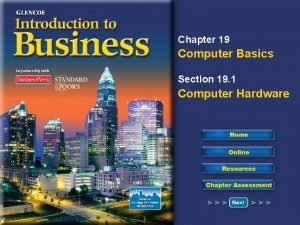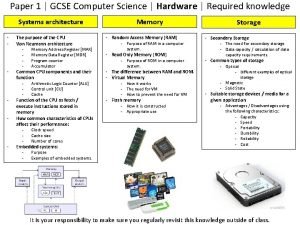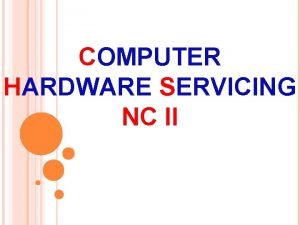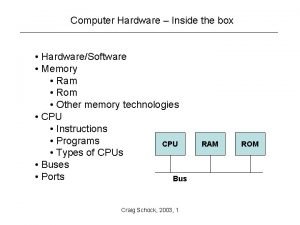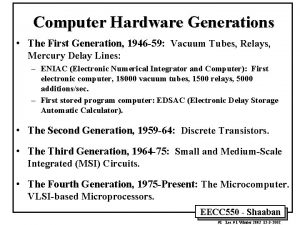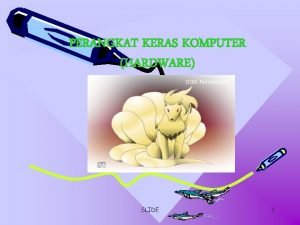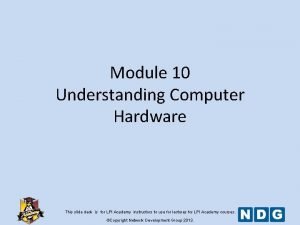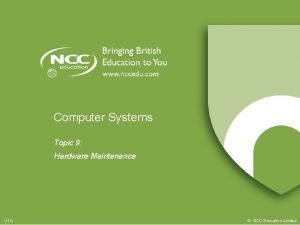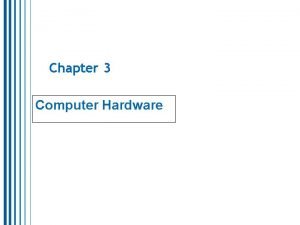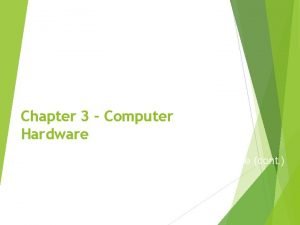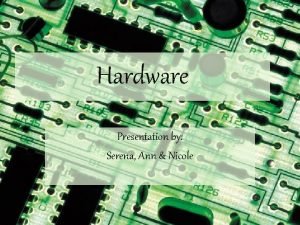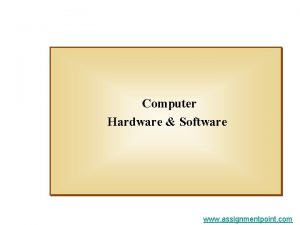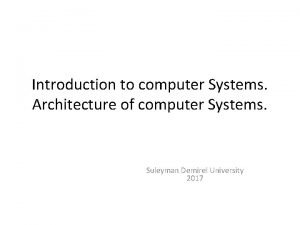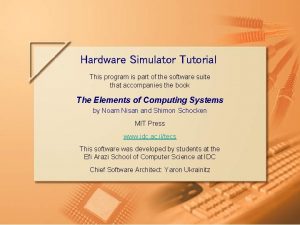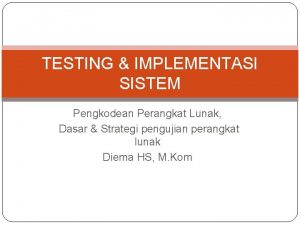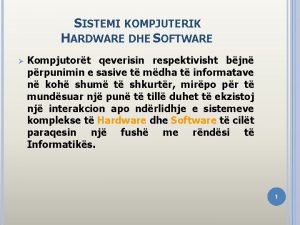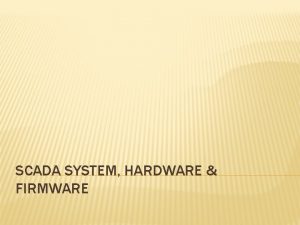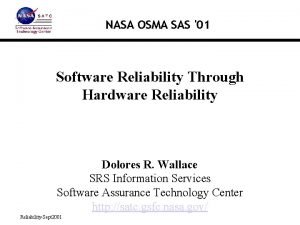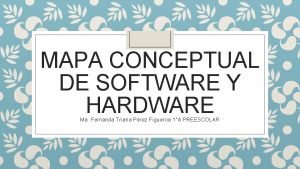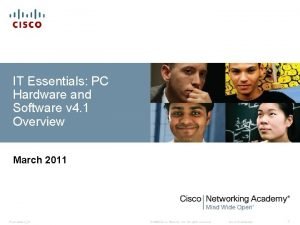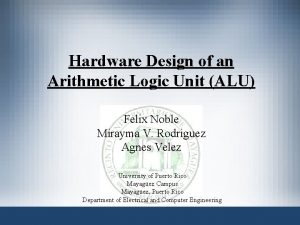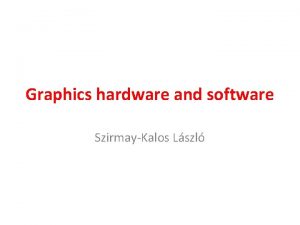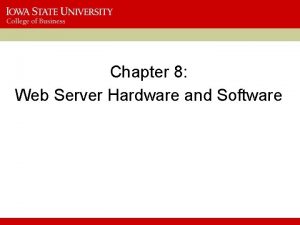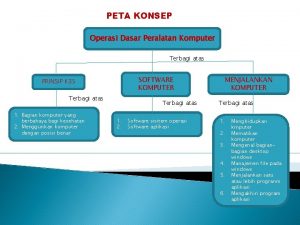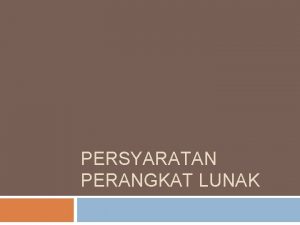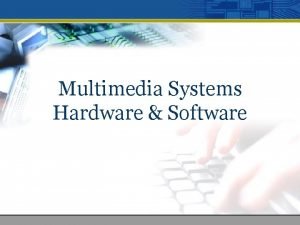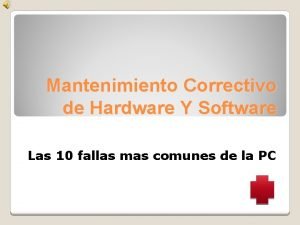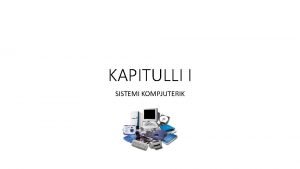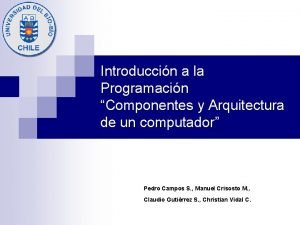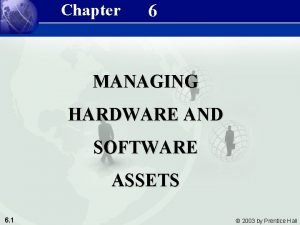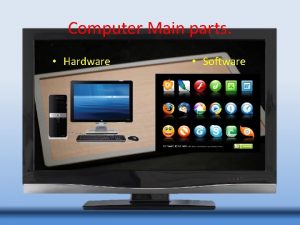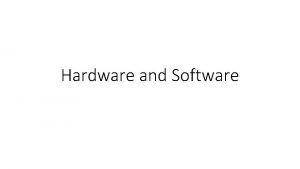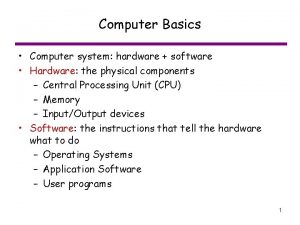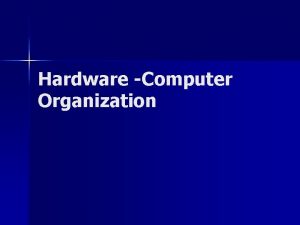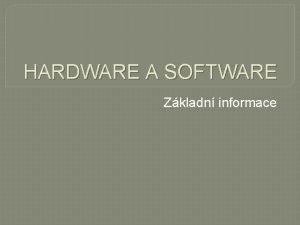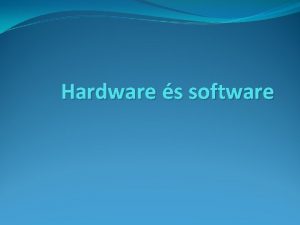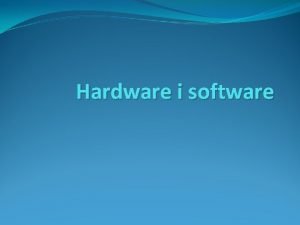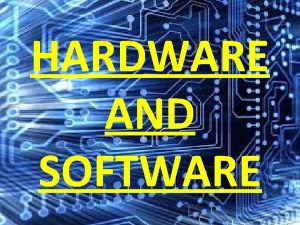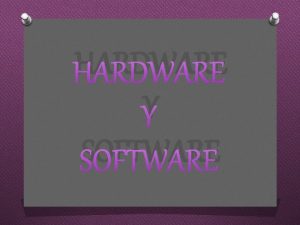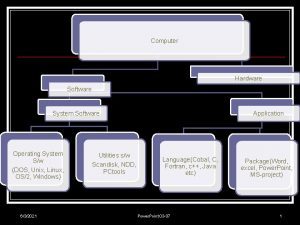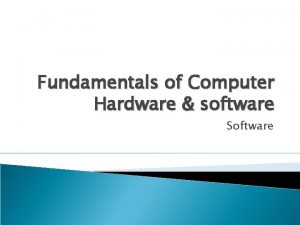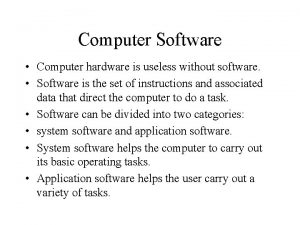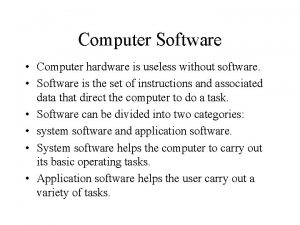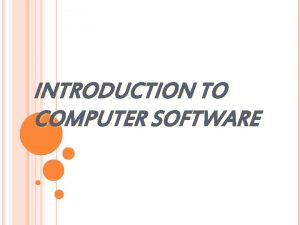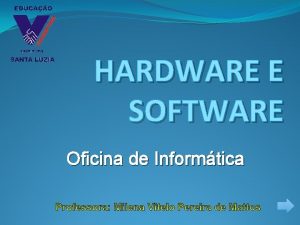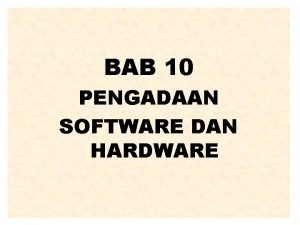computer system PEOPLEWARE HARDWARE SOFTWARE PEOPLEWARE User Data




























































- Slides: 60


�������� (computer system( • PEOPLEWARE • HARDWARE • SOFTWARE

PEOPLEWARE • • User Data Entry Operator Computer Operator Programmer (Application Programmer, System Programmer) • System Analyst • Administrator (System, Network, Database) • EDP Manager

HARDWARE CPU Control Unit Arithmetic/logic Unit Input device Memory Output device


INPUT DEVICE ���� keyboard, mouse, disk drive, tape drive, microphone, joystick

OUTPUT DEVICE ����� , printer, disk drive, tape drive, plotter, speaker

address MEMORY 0 1 2 bit = binary digit byte = 8 bits 1 K = 210 bytes 1 M = 220 bytes 1 G = 230 bytes ���� s= 2 s -1 RAM (Random Access Memory) ROM (Read-Only Memory) ����� bit ����� address ���� s= 3 ���� address 0 -

SOFTWARE • System Software - System Management Programs: Operating Systems - System Development Programs: Compiler, Interpreter, Editor - System Support Programs: utility, performance monitor, security monitor • Application Software - General-purpose Programs: e. g. word processing, spreadsheet - Application-Specific Programs: e. g. airline reservation, banking

COMPUTER LANGUAGE • Low-level Language - Machine language - Assembly Language • High-level Language e. g. C, Pascal, FORTRAN

ASSEMBLER source program assembly language assembler object program machine language COMPILE TIME

COMPILER source program high-level language compiler object program machine language COMPILE TIME

RUN TIME input data machine language output

INTERPRETER source program input data interpreter COMPILE and RUN TIME output

������� C #include <stdio. h> main() { int i, j; scanf(“%d”, &i); j=2*i+5/10 -3; printf(“%d %dn”, i, j); }

�������� assembly. 386. data i dd ? j dd ? . code mov i, 10 mov ax, i add ax, 5 mov j, ax end

MACHINE LANGUAGE • DATA • INSTRUCTION

DATA REPRESENTATION • • CHARACTER INTEGER FLOATING POINT Binary Code Decimal (BCD(



INTEGER • UNSIGNED INTEGER • SIGNED INTEGER


n=1 binary decimal 0 0 1 1

n=2 binary 00 01 10 11 decimal 0 1 2 3

n=3 binary 000 001 010 011 100 101 110 111 decimal 0 1 2 3 4 5 6 7

SIGNED INTEGER • SIGNED MAGNITUDE • ONE COMPLEMENT • TWO COMPLEMENT


n=2 binary 00 01 10 11 decimal +0 +1 -0 -1

n=3 binary 000 001 010 011 100 101 110 111 decimal +0 +1 +2 +3 -0 -1 -2 -3


n=2 binary 00 01 10 11 decimal +0 +1 -1 -0

n=3 binary 000 001 010 011 100 101 110 111 decimal +0 +1 +2 +3 -3 -2 -1 -0


n=2 binary 00 01 10 11 decimal +0 +1 -2 -1

n=3 binary 000 001 010 011 100 101 110 111 decimal +0 +1 +2 +3 -4 -3 -2 -1


���� 10(0. 00173)������ 0. 000173 x 101 , 0. 001730 x 100, 0. 017300 x 10 -1, ���� 0. 173000 x 10 -2 ��������� normalized 10(103. 5)�������

IEEE standard

IEEE standard

IEEE standard

����� biased exponent mantissa all 0 nonzero all 1 all 0 all 1 nonzero special meaning floating point zero denormalized infinity Na. N (Not a Number)

���� decimal 10. 0 ���� binary ��� IEEE standard, short real ������ 0000 0100 0001 1000 0000

Binary Code Decimal (BCD( • Packed BCD • Unpacked BCD

BCD ��� binary 4 ��� decimal ������� BCD 0000 0001 0010 0011 0100 0101 0110 0111 1000 decimal 0 1 2 3 4 5 6 7 8

Unpacked BCD �������� ��� 0000 �������� BCD ���� decimal 1234 ������ Unpacked BCD ������ 0000 0001 0000 0010 0000 0011 0000 0100


���� data representation data character integer floating point BCD ASCII unsigned packed EBCDIC signed unpacked signed magnitude UNICODE one complement two complement











���� if (A = = B) then A=A+1; else B=B-1 ����������� CMPA, B JEQ L 1 SUB B, 1 JMP L 3 L 1: ADD A, 1 L 3:

���� SUM=0; FOR I=1 TO 100 DO SUM=SUM+I; ������������ MOV SUM, 0 MOV I, 1 L 1: CMP I, 100 JGT L 2 ADD SUM, I ADD I, 1 JMP L 1 L 2:

 Peopleware input
Peopleware input A computer system consists of both hardware and software
A computer system consists of both hardware and software Single user and multiple user operating system
Single user and multiple user operating system Operating systems
Operating systems Hardware and software for computer graphics
Hardware and software for computer graphics Software brings the machine to life
Software brings the machine to life Definition of hardware and software
Definition of hardware and software Hardware introduction
Hardware introduction Identify media and graphic software
Identify media and graphic software External computer hardware
External computer hardware Major hardware components of a computer system
Major hardware components of a computer system Computer hardware review in operating system
Computer hardware review in operating system Hardware identify
Hardware identify Gui is an interface between
Gui is an interface between Interface between user and computer
Interface between user and computer Peopleware productive projects and teams
Peopleware productive projects and teams Thought stopping
Thought stopping Archivos system.ini; win.ini; system.dat; user.dat
Archivos system.ini; win.ini; system.dat; user.dat Computer hardware platforms in it infrastructure
Computer hardware platforms in it infrastructure Hardware and software infrastructure
Hardware and software infrastructure Computer hardware platforms in it infrastructure
Computer hardware platforms in it infrastructure Fftooo
Fftooo Computer hardware 101
Computer hardware 101 Computer hardware classification
Computer hardware classification Computer hardware & network maintenance
Computer hardware & network maintenance Chapter 5 it infrastructure and emerging technologies
Chapter 5 it infrastructure and emerging technologies Graphic organizer of computer hardware
Graphic organizer of computer hardware Hardware gcse computer science
Hardware gcse computer science Computer hardware servicing nc2
Computer hardware servicing nc2 Computer hardware
Computer hardware Generation hardware
Generation hardware Computer hardware skills
Computer hardware skills Computer hardware slides
Computer hardware slides Dot matrix display ppt
Dot matrix display ppt Types of computer hardware maintenance
Types of computer hardware maintenance Brief history of computer hardware
Brief history of computer hardware 3 computer hardware components
3 computer hardware components Hardware presentation
Hardware presentation Objectives of computer hardware
Objectives of computer hardware Functions of system unit
Functions of system unit Computer hardware simulator
Computer hardware simulator Objective of computer system
Objective of computer system What is computer organization
What is computer organization Testing dikatakan baik, jika
Testing dikatakan baik, jika Hardware and software shqip
Hardware and software shqip Scada is a software or hardware
Scada is a software or hardware Difference between hardware and software
Difference between hardware and software Mapa mental de software y hardware
Mapa mental de software y hardware Cisco it essentials virtual desktop download free
Cisco it essentials virtual desktop download free Perangkat lunak jaringan komputer
Perangkat lunak jaringan komputer Design of alu
Design of alu Interactive graphics software and hardware
Interactive graphics software and hardware Web server hardware
Web server hardware Importance of software reliability
Importance of software reliability Operating system mind map
Operating system mind map Persyaratan spesifikasi perangkat
Persyaratan spesifikasi perangkat What is multimedia hardware
What is multimedia hardware Mantenimiento correctivo hardware y software
Mantenimiento correctivo hardware y software Pjeset hardware te kompjuterit
Pjeset hardware te kompjuterit Arquitectura de von neumann mapa conceptual
Arquitectura de von neumann mapa conceptual Managing hardware and software assets
Managing hardware and software assets
